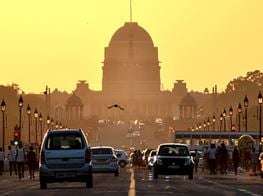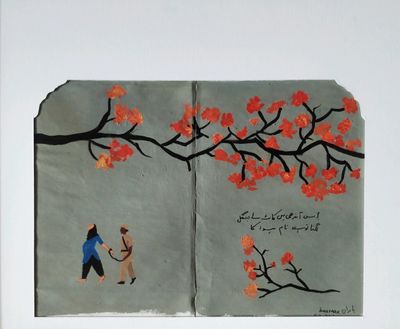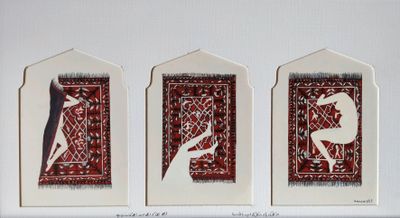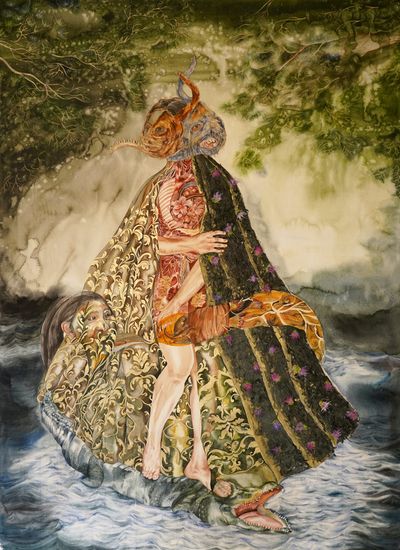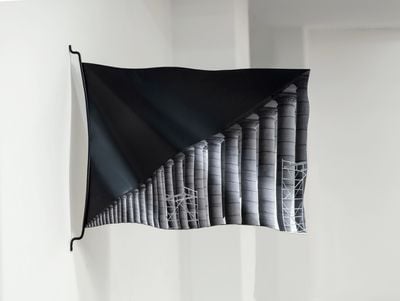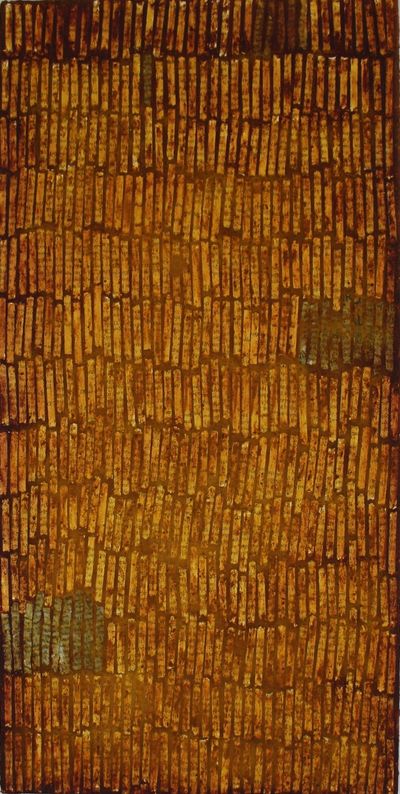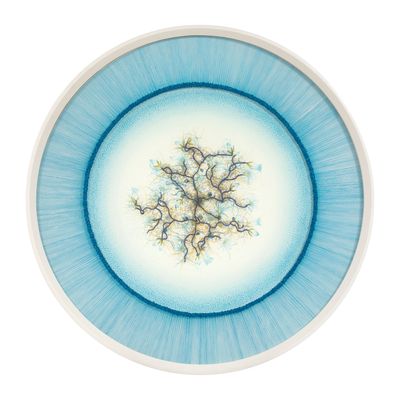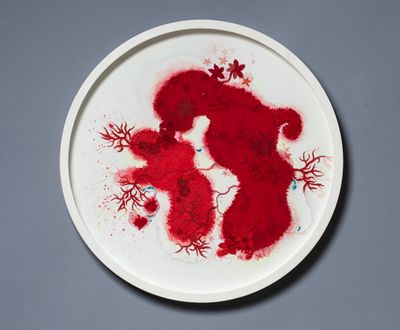Resilience and Reconnection at Delhi Contemporary Art Week
The fourth edition of Delhi Contemporary Art Week (DCAW) opened on 8 April 2021 at Bikaner House with seven participating galleries from across New Delhi: Blueprint12, Exhibit 320, Gallery Espace, Latitude 28, Nature Morte, Shrine Empire, and Vadehra Art Gallery.
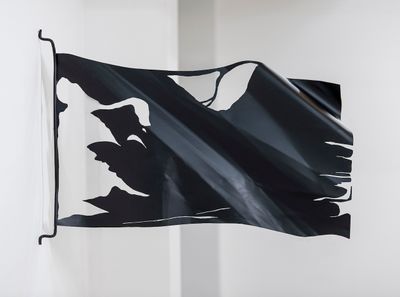
Ayesha Singh, Flag (Torn) (2020). Metal. 61 x 91.4 cm. Courtesy the artist and Nature Morte.
Complementing the existing format of DCAW, with participating galleries showing in different rooms of the venue, is Residues, a special group show curated by Reha Sodhi. Installed in the main ballroom area of Bikaner House is a group of artworks by 24 artists from the aforementioned galleries.
Mindful of the dire effect of the Covid-19 pandemic, Residues is a collective account of resilience drawn from personal histories. For instance, Baaraan Ijlal's Locust Eaten Moon, Diary Entries (2020) is inspired by silent conversations the artist had with the tree outside her house during the 2020 lockdown.
A metaphorical extension of the leaves growing on the lonesome tree, the artist painted a woman's body across three separate minaret-shaped cut sheets, lying in varying positions on a crimson Persian rug.
With conditions of isolation further aggravated by the lockdown, Anupama Alias' mixed media painting, An Island of Hope (2020), made during the pandemic, invokes a fantastical world. The entangled forms of anthropomorphic figures clothed in robes of golden beige, red, and black articulate an illusion of togetherness countered by faces that look away from each other.
As much as pandemic has facilitated intimate connections with home and belonging, it also exacerbated experiences, and memories, of separation. In a mixed media work on translucent fabric titled Spiral Staircase (2021), Sumakshi Singh recreates an architectural fragment—a red staircase—from her ancestral post-Partition home in New Delhi, resurrecting a visceral memory of loss that connects with the present day.
If Residues knits a visual conversation on resilience in the face of precarity, the works on view among DCAW's gallery rooms foster a reconnection with the institutions of power—such as the nation state and capitalist regime—as a means to revaluate their value in times of crisis.
Within Contradiction (2020) by Ayesha Singh, showing with Nature Morte, unfolds the sociopolitical power structures embodied in the ultimate symbol of a nation state's identity: its flag.
Flag (Warped) (2020) comprises a digitally printed image, diagonally at the lower half on the silk cloth, of the columns of Parliament House in New Delhi superimposed by scaffolding, which manifests the crux of Singh's practice involving urban architectural landscape—the inevitability of the 'state of transformation'.
The idea, it seems, is to open up space not only to reflect on exigent circumstances, but to prepare for what comes next.
To further highlight the importance of change in democracy is Flag (Torn) (2020), a metal form that borrows the shape of the flag from Leon Cogniet's painting Scenes of July 1830, but replaces the latter's celebratory colours of white and red to black, synonymous with dissent.
Installed in a row, Meghana Gavireddygari's abstract panels Swadeshi (2020), showing with Blueprint12, are minimalist assemblages composed of organic material—Indian spices, textiles, and tea—arranged into patterned stripes, with titles such as Inquilab Zindabad and Simla Agreement (both 2020) borrowed from Indian colonial history, conjuring a world devoid of hierarchy.
The other gods and goddesses (2020) by Khadim Ali, shown by Latitude 28, is a scroll crafted from machine and hand embroidery that summons the dystopian world of the classical epic Hamzanama, inhabited by mythical demons. Hailing from Hazarajat, a politically sensitive border region between Afghanistan and Pakistan, the artist supplants the role of gods as benevolent figures that bring the world together by demons that carve sectarian division.
Moving away from a world of demons is Ishita Chakraborty's postcard-sized painting on soil, Circadian Rhythms (2020), which elicits a connection with cosmic energies through acts of observation. Showing with Gallery Espace, a depiction of night skies inspired by the artist's lockdown-period diary documents the alignment of stars at the north and south celestial poles of the earth.
In defiance of the linear progression of utilitarian purpose promoted by institutional structures stands Pranati Panda's series of circular mixed media fabric and thread works, 'The Soft Land' (2019–2021).
The embroidered pieces, displayed in a room dedicated to Vadehra Art Gallery, are rendered in either blue or red. The latter colour manifests what Panda interprets as a life force, while blue is the embodiment of the eternal flow of time, bereft of stagnant permanency—an interpretation that is reflected in the act of weaving and sewing as a practice to reawaken the circuits of non-linear memory.
To foreground acts of collective resilience and reconnection for this fourth edition of DCAW makes sense, given the fact that the pandemic's end remains a distant vision. The idea, it seems, is to open up space not only to reflect on exigent circumstances, but to prepare for what comes next.—[O]

